LG's gram PC claims to be the lightest PC in the world. The 13-inch model comes in at 2.1 pounds, the 14-inch one is 2.2 pounds, and the 15.6-inch variant is 2.4 pounds. LG sent me the 15.6-inch model, and this thing is a dream to carry around.
Indeed, there's nothing quite like throwing a laptop in a bag and feeling like it's not even there. But what's interesting is that LG doesn't seem to have made the usual compromises that you'll find on thin and light consumer laptops. There are still USB Type-A ports, the display has multitouch, and the trackpad is clickable.
Here's our review:
Specs
| CPU | Intel Core i7-8550U (1.8GHz) |
|---|---|
| GPU | Intel UHD Graphics 620 |
| Body | 14.1x9.0x0.7 inches, 2.41 pounds |
| Display | 15.6 inches, 1920x1080, IPS LCD, multitouch |
| RAM | 16GB DDR4 2400MHz - 8GB x 2 |
| Storage | 512GB M.2 SSD |
| Ports | (3) USB 3.0 Type-A (1) Thunderbolt 3 (1) HDMI Micro-SD 3.5mm audio input/output |
| Battery | 72Wh |
| Material | Metal Alloy (Nano Carbon with Magnesium) |
| Color | Dark Silver |
| Windows Hello | Fingerprint |
| Price | $1,749.99 |
Day one
Design
Made out of a nano carbon and magnesium alloy, the Dark Silver color of the LG gram makes it look quite stylish. It doesn't have the same look or feel of a lot of the aluminum "MacBook clones" that you'll find out there, and the material is clearly engineered to make the device as light as it is.
And at 2.41 pounds, this thing is light. If you pick it up, it feels like one of those dummy units that you'll find in a store that don't actually have a battery inside of them, except this is a fully functional PC.
The PC is also MIL-STD-810G tested, meaning that it's shock, water, and dust resistant. It can stand up to extreme temperatures, and more. Check out LG's video below.
Part of the reason for that durability is the materials that are used in the gram. I've reviewed a number of devices that are MIL-STD-810G tested, but this is probably the first one where I actually feel like I can drop it on the concrete and it will still be intact. We'll revisit this in the display section.

As I mentioned in the introduction, LG didn't make any compromises on ports with the gram. On the left side of the device, you'll find a USB Type-A port, a USB Type-C port that supports Thunderbolt 3 (Thunderbolt is optional), HDMI, and a power port. In my time with the gram, I've never used the power port. Like any sane person, I used the Thunderbolt 3 port for charging, as it makes a lot more sense to use the same charger for multiple devices. Unfortunately, the device itself comes with a pin charger.
Thunderbolt 3 is a nice addition though, and according to LG, this is a full Thunderbolt 3, with four 10Gbps lanes for a total of 40Gbps. The port itself can support up to two 4K displays or a single 5K display, although I wouldn't recommend it with the integrated graphics of the gram. A better use case would be a docking solution, not that you even need it with all of those ports. Still, the point is that you have options when it comes to Thunderbolt 3.

ON the right side, you'll find your 3.5mm audio input/output jack, two more USB 3.0 Type-A ports, and a micro-SD card slot. The 3.5mm headphone jack is fine, but if I could provide some feedback to LG, I'd tell them to use the same Hi-Fi Quad DAC technology that's in the company's flagship phones.
After you open up the device, you'll find that the keyboard includes a number pad on the right side, and there's a standard-sized trackpad underneath it. The power button is on the top-right portion of the keyboard, and that doubles as a fingerprint sensor.
Despite the narrow bezels around the display, LG still put the webcam where it belongs, above the screen. In fact, the company used slim bezels all around, with even the chin not coming in too thick.
Display
First, I'll just say that the 15.6-inch 1080p display looks pretty, in the sense that it presents accurate and vibrant colors, and it gets pretty bright. There's a downside to it though, and that's where the durability of the device comes in.

While the LG gram supports multitouch, it feels like it's made of plastic when you touch it. The fact is that screens made of softer materials like plastics are less likely to shatter, although they're more likely to scratch. That's why I have no doubt that if I dropped this machine in the road, the screen won't break. It might feel cheap to the touch, but it's stronger that way. The materials of the display also keep the weight down.
I also think it's OK that it feels cheap to the touch. This isn't a convertible; it's a clamshell laptop. While multitouch support is important for when you might actually need it, the truth is that the vast majority of the time, you don't. For these reason, there's obviously no pen support either.

I was a bit disappointed with the glare of the screen. This isn't something that you'll want to use outdoors. But in most use cases, you'll be very happy with this display. I'd prefer something in a 1440p flavor, especially for a device of this size, but that's really neither here nor there.
Keyboard
I found the keyboard to be extremely comfortable to type on, and it's pretty quiet as well. This is one of the most important qualities of a laptop to me, given that I type for a living.
One thing that I found a bit awkward is that there's a full number pad on the right side of the keyboard, so this did take a little bit of getting used to. Obviously, most laptops don't have a number pad at all, so I found myself typing on a keyboard that's placed to the left of where it's normally placed on a mobile PC. I'd find myself sometimes hitting keys on the number pad instead of backspace.

The number pad is actually a somewhat unique feature though. If this is something that you've always wanted on a laptop - and I know these people exist - then you can get it with the gram.
The glass trackpad is also quite nice. It's accurate, and not oversensitive, or undersensitive for that matter. I was surprised to find it's clickable, rather than being a touchpad that can't actually be clicked, because I keep looking for where the compromises were made in this PC.
Another thing that's impressive is that the keyboard is backlit. This is on by default, or you can turn it on with the F9 key.
But ultimately, it's a keyboard that you won't be disappointed with, if you type a lot like I do.
Windows Hello
The LG gram uses a fingerprint sensor for Windows Hello, and there's no IR camera for facial recognition. Normally, I criticize devices for this, as it's more natural for a device to recognize you when you're sitting in front of it. However, LG used a feature that I've only seen in Huawei's MateBooks.
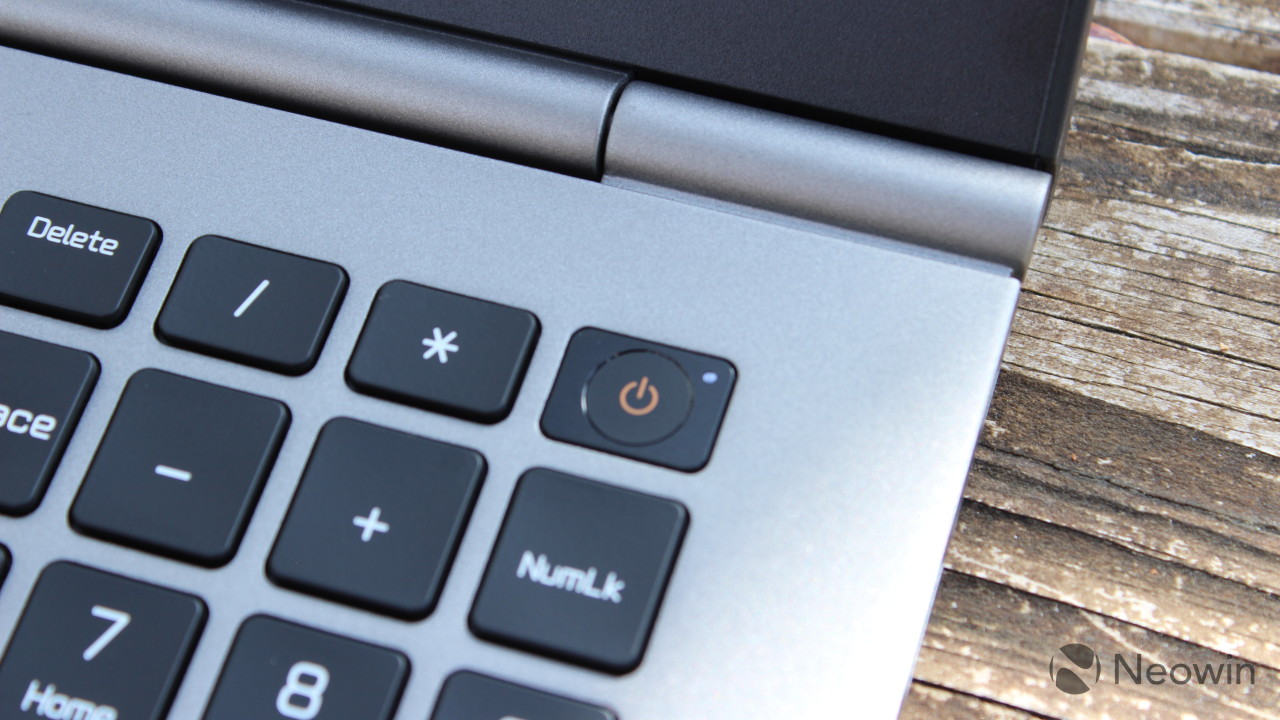
The fingerprint sensor is embedded in the power button, and it reads your fingerprint sensor when you press the button to turn on the PC. That means that when the device reaches your lock screen, you don't have to scan your finger again. It just signs you in.
If you ask me, this is the one method that's even more intuitive than facial recognition, and it's probably even faster and more accurate. Because of this frankly wonderful method of implementing facial recognition, I can give LG a pass on the lack of an IR camera. After all, it would probably mean a larger top bezel, and I think the company made the right move here.
Performance and battery life
Once again, I really don't know what sacrifices LG made to make the gram so light. LG says that it has a 72Wh battery, although I suspect that it might just run on magic. The machine has no problem getting through a full day of work, with an average use case. For me, that means Chrome, OneNote, Skype, Slack, and the occasional Photoshop.
The Intel Core i7-8550U is a great chip for productivity, although the lack of dedicated graphics means that it's not something that you'd want for video editing or gaming. This generation of U-series processors is quad-core, whereas previous generations were dual-core, and it's still 15W. If you're not familiar with the U-series, all you really need to know is that it's the typical CPU that you'll find in an ultrabook or convertible, and i7 is the best.
Combined with 16GB RAM and a 512GB SSD, this machine is engineered for productivity performance.
For benchmarks, I used PCMark 8, which offers three tests: Home, Creative, and Work. First up is Home, which checks common tasks like casual gaming, video chat, web browsing, and more.


The score is about what you'd expect from a machine with a Core i7-8550U with integrated graphics. Next up is Creative, which tests more GPU-intensive tasks like video editing and mainstream gaming.


Obviously, it's not on par with gaming PCs, but again, this machine has integrated Intel UHD Graphics. The difference between that and dedicated graphics is that integrated graphics shares the system memory, while dedicated graphics has its own. Finally, the Work test checks productivity-related tasks like writing and spreadsheets.


Obviously, productivity is where the LG gram really shines, and once again, that's no surprise.
If you're like me and productivity is really what you're aiming for in a laptop, then this is perfect. It's good for some Photoshop, and you can even edit video in Premiere Pro in a pinch.
Conclusion
I really love the LG gram. The thing is that with most thin and light laptops, companies make a lot of compromises. For example, Apple's MacBooks butt out USB Type-C in favor of Thunderbolt 3, and Acer makes some notebooks that don't have clickable trackpads. Huawei's original MateBook X didn't have touch in the display, so there's always something.

I really couldn't find a sacrifice with the LG gram. The cheap feel of the display seems more geared toward durability (although it also cuts the weight), and I don't even think it counts as a sacrifice. The vast majority of the time, I don't even notice it.
The other thing is that most ultra-portable laptops that I come across come in smaller sizes, usually around 13.3 inches, or even 14 inches with the Lenovo ThinkPad X1 Carbon. There don't seem to be a lot of 15.6-inch laptops that are made for what the LG gram does. You don't have to sacrifice screen size for portability here, and that's amazing.
I really can't say how nice it is to be able to toss a laptop in my bag and not even feel it in there when I'm walking around. Occasionally, I have to go back to check and make sure I didn't actually forget the laptop.
The LG gram is a laptop that I can recommend to just about anyone. The groups that are excluded from this are those that need gaming, video editing, or those that need a convertible. If you're in the market for a premium clamshell laptop that's engineered for productivity, super-light, and won't break on you, look no further than the LG gram.
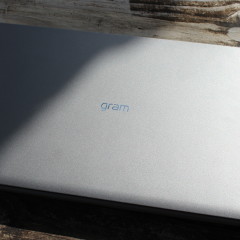
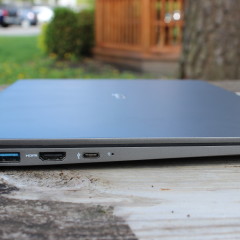
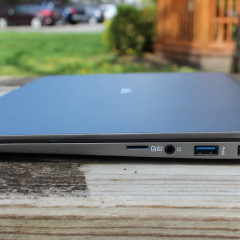
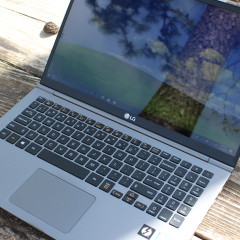
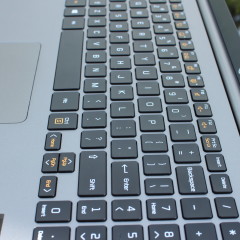
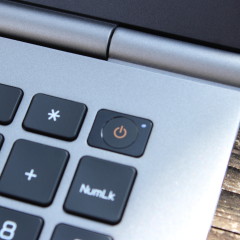

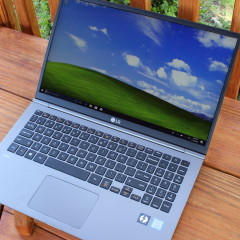
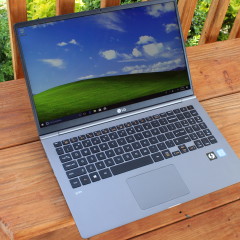









12 Comments - Add comment